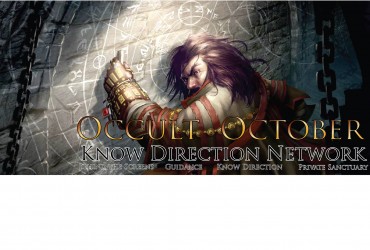It’s that time of year again. The days are shorter. Shadows grow deeper. And the things that go bump in the night become a little bolder. It’s also time for a somewhat more recent tradition for my gaming group, the Halloween One Shot. Around this time of year, when axial tilt blesses the northern hemisphere with longer nights, my players crave a good scare I start dreaming up ways to oblige them. For today’s topic, I thought I might talk some more about my favorite RPG genre and how I go about facilitating successful narratives in my group. I’ll go over why I think one shots are the best format for this sort of thing and give you a few adventure ideas to percolate on.
So why the one shot? One shots, or self-contained, single-session adventures – the kind around which organized play systems like PFS are so successfully structured – are probably my favorite type of game. They’re the short story to the campaign’s novel. They express a whole and complete story idea from intro to conclusion in six hours or less. This is really important for building up tempo as well. A finite, measurably session length gives you just enough time to build suspense, introduce threats, and break a climax before everyone’s brain is fried from having sat at a table for hours on end.
One great thing about designing a one-shot game is that you really don’t have enough time to bog yourself down in extraneous details. The format forces you to stick to what’s important. Introduce your setting and the twist within the first fifteen minutes. Start foreshadowing almost immediately. Notice what things your players start to pick up on and emphasize those points you want them to pay more attention to. When you’ve got their interest piqued, drop the first shock. Then the second. Keep the narrative moving and don’t give them too much time to over think their situation. Drive it all home with a dramatic end sequence! Ta-da! You’ve done it!
Okay. Enthusiasm is all well and good, but how about a concrete example? Of course, dear reader, of course. A couple of years ago I ran a one shot for a group of rookie gamers based loosely on H.P. Lovecraft’s “Shadow Over Innsmouth”. It started with a couple of college kids on a roadtrip during Spring Break, lost somewhere in the rural country. Of course, their car breaks down and they’re forced to wander into the nearby town for refuge and repairs. And of course, the town isn’t what it seems and one thing leads to another and the PCs are gradually assaulted and eaten by the cannibalistic towns folk – one at a time. One of the players, desperate to save herself tries to blend in by consuming her fallen friend. But it ends all for naught and the final desperate escape attempt fails as the last of the surviving players is dragged to a grisly demise in a cornfield.
All this was accomplished in a single evening. Because the game was a one-shot, there’s no need for PCs to live through the entire narrative. Thus, the potential for character death became an ever increasing reality, serving only to increase tension as the night wore on. And because the game was a one-shot, I was able to end the story on a high note, leaving my players buzzed and excited.
So, what other spooky stories can you tell? I’m glad you asked, dear reader. The following are a few ideas from my adventure hook notebook. They’re not completely fleshed out but you might find them interesting.
Harvest Festival – the PCs arrive in a remote settlement during a time of great festivity. It’s harvest time and the storehouses are filled to burst. The settlement is in mid celebration and the PCs are welcomed as honored guest. The PCs meet a beautiful villager who they should get to know over the course of the evening. The next day the villager is gone. No one seems to notice the absence. Or perhaps it’s that no one wants to talk about it.
As it turns out, the villager was the latest in a string of bloody sacrifices to the Harvest God to ensure that this year’s planting is blessed with fertile soil. The festivities continue into tonight as well but the next victim is one of the PCs.
The Wishing Well – A crumbling well stands at the edge of the woods, far from the local town. Children are known to play by the the well and occasionally toss copper down its depths in the hope that a wish might come true. A child of a local politician goes missing one day and no one knows where to look until a soft red glow is seen emanating from the well that night.
the Stranger – A mysterious figure begins to make ominous appearances in front of key NPCs around town. He makes cryptic demands and promises dire consequences if they are not met before disappearing in an equally mysterious fashion. After a short time these appearances turn murderous and grisly remains are discovered around town with a reiteration of his demands inscribed in blood nearby. Who this individual is or what he wants is unclear, but the PCs are tasked to stop the murders.
Each hook revolves around a central mystery that takes the mundane – a small village, a well, and a visitor – and turns it slightly askew. This to me is crucial to the foundation of the horror genre. Start with simple expectations so that your players can relate. And then change things ever so much as to get them questioning. Obviously these aren’t quite fleshed out. But I think they have some potential.
Have an idea for a horror game hook? Want to share a spooky story that you’ve run your players through? Let us know in the comments section below!





